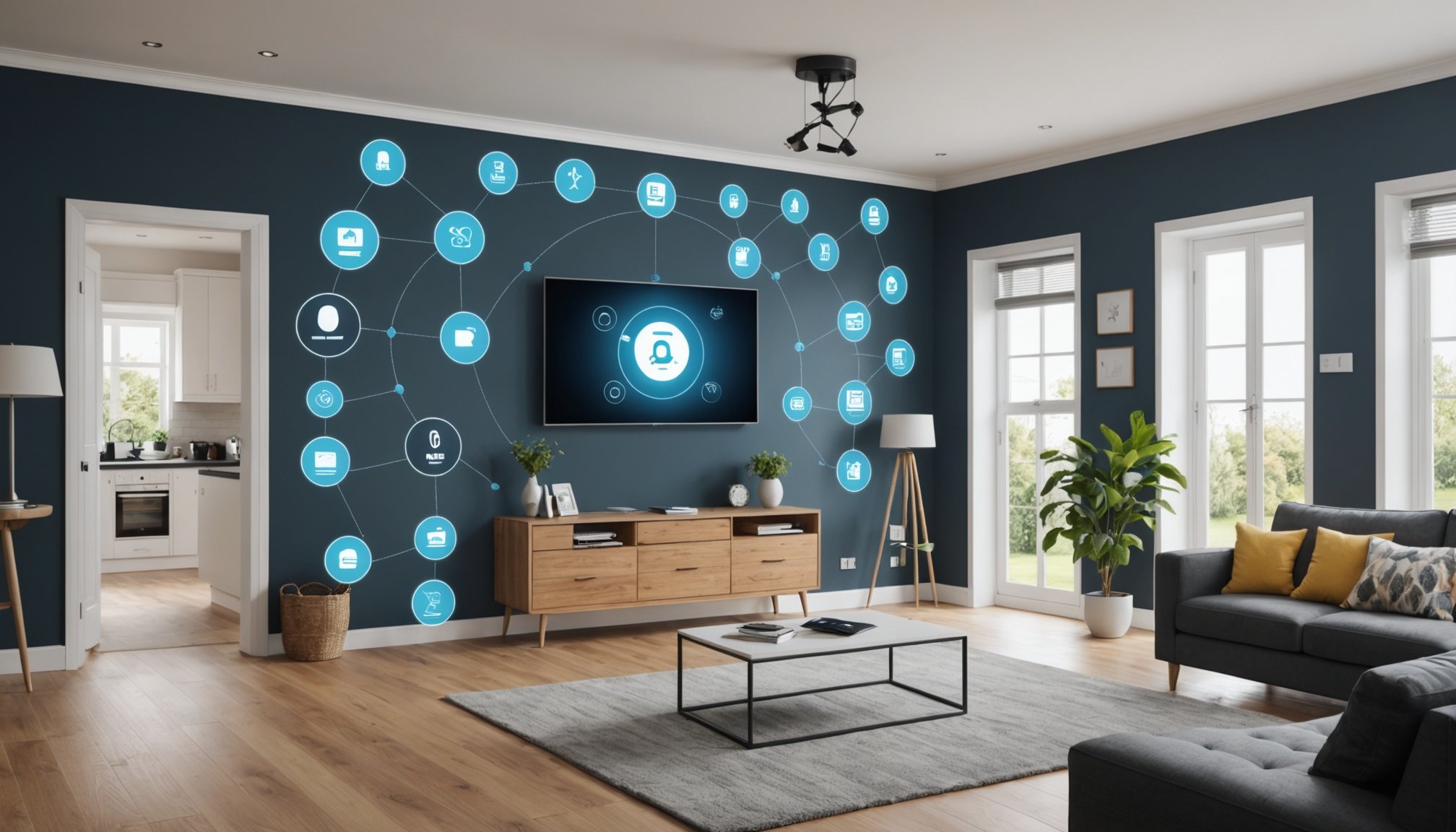Types of IoT Devices for Smart Home Security
Smart home technology has revolutionised IoT home security by offering innovative solutions for enhanced protection. Security cameras, for example, are a popular IoT device designed to monitor surroundings, providing live feeds accessible remotely. These devices offer features like motion detection and night vision, ensuring vigilant monitoring around-the-clock.
Smart locks present another breakthrough in home security, allowing homeowners to control access from anywhere using a smartphone. With features like keyless entry and temporary user codes, these locks ensure convenience without compromising security.
Also read : Unlocking digital success: your comprehensive guide to elevating small businesses in the uk
Motion sensors integrate seamlessly with home automation systems. They detect unusual movements, triggering alarms or notifying homeowners of potential intrusions. This real-time alert system significantly enhances the security measures within a smart home setup.
Popular brands such as Nest and Ring dominate the UK market, offering comprehensive security solutions with their smart devices. Each device boasts unique attributes, tailored to suit varying needs and preferences. As the landscape of smart home technology evolves, the integration of these IoT devices ensures that homeowners in the UK have access to advanced security solutions that protect their properties effectively and efficiently.
Also read : Discover barcelona’s best luxury real estate agency today
The Role of IoT in Enhancing Home Security
The integration of the Internet of Things (IoT) into home security systems has fundamentally transformed safety measures for households. This synergy between IoT and home security enables homeowners to remotely monitor and control their properties through smart home technology. A significant application of IoT in home security involves connecting various smart devices, allowing for a comprehensive strategy that ensures maximum protection.
The UK’s security solutions landscape has benefited greatly from these advancements, with IoT technology offering enhanced vigilance and rapid response capacities. Statistics reveal an increase in the use of IoT-enabled security systems, with many households adopting smart cameras, locks, and sensors to safeguard their properties.
Smart home technology not only improves protection but also provides peace of mind to homeowners. These systems send real-time alerts and notifications, ensuring that any threat is promptly addressed. As more smart devices become integrated, the potential for IoT home security solutions continues to expand. This technology promises to bolster home safety in ways that were previously unimaginable, creating a safer living environment for UK residents by leveraging cutting-edge innovations.
The Role of IoT in Enhancing Home Security
The advent of IoT home security has redefined how homeowners protect their domiciles. The integration of smart home technology enables seamless communication among devices, creating a robust security framework. UK security solutions have prominently adopted these technologies, leading to significant improvements in overall safety measures.
A primary feature of IoT technology is its capability to facilitate comprehensive home protection. Through the interconnection of smart devices such as cameras, locks, and sensors, homeowners gain precise control over their security systems. Devices can be managed remotely, providing real-time alerts and enhancing response times to potential threats. This interconnectedness is a cornerstone of modern security setups, ensuring all components work in harmony to safeguard properties.
The impact of IoT on home safety in the UK is evident through various statistics. Recent data indicates a marked increase in the adoption of these systems, with households recognising their efficacy in deterring invasions. Additionally, IoT deployments have shown compelling results in real-time monitoring, making smart home technology a preferred choice for safety-conscious residents. These systems are not only practical but also promise a futuristic approach to home protection.
Addressing Vulnerabilities in IoT Security
The proliferation of IoT vulnerabilities presents notable challenges in maintaining robust data privacy and comprehensive cybersecurity measures for smart homes. Understanding these potential risks is imperative for fortifying home security systems. A significant concern lies in the unencrypted data transmission, which can be intercepted by malicious actors. To combat this, device manufacturers often implement end-to-end encryption, ensuring sensitive information remains secure during transmission.
Cybersecurity threats manifest in various forms, including malware attacks, unauthorized access, and network breaches. Regularly updating devices is crucial for addressing IoT vulnerabilities as it patches known security flaws, protecting devices from emerging threats. Employing a multi-layered security approach, which includes firewalls and intrusion detection systems, adds an extra layer of protection.
Mitigating these risks requires adopting best practices, such as changing default passwords and utilising strong, unique credentials for each device. Regular security assessments can pinpoint weaknesses, enabling homeowners to take proactive measures. Additionally, installing antivirus software and performing routine security audits fortifies the network. These strategies underscore the importance of vigilance in maintaining a secure IoT ecosystem, ensuring the privacy and safety of users in their smart home environments.
Case Studies on Successful IoT Security Implementations
Exploring real-life examples in the UK provides a well-rounded view of how UK smart homes are reaping the benefits of case studies focusing on IoT security. In one notable example, a London-based family utilised a combination of smart cameras and sensors to enhance their home security. This setup included motion-activated cameras integrated with an automation system, allowing for immediate alerts and live streaming to mobile devices.
Such implementations offer invaluable insights into which specific features significantly boost security measures. For instance, employing smart locks with temporary access codes enabled the family to grant secure entry to service personnel. These codes were time-bound, enhancing entry-point control.
From these implementations, key lessons learned include prioritising real-time notification systems and remote management capabilities, which greatly contribute to a seamless and responsive security setup. Additionally, best practices suggest regular system updates and customising device settings according to household needs. Adoption of these features and practices underlines the potential of IoT technology to create robust, adaptable home security frameworks, designed to proactively address unique security concerns and bolster peace of mind.
Practical Tips for Implementing IoT Security Solutions
Ensuring a secure smart home setup necessitates selecting IoT devices that are both compatible and effective. Prioritising device compatibility is crucial; integrating systems that work seamlessly together can prevent technical hitches and ensure optimum performance. Evaluate your existing infrastructure to determine which devices align best with your needs.
When setting up an IoT security system, a methodical approach enhances installation efficacy. Begin by identifying key areas of vulnerability; these often include entrances and main living spaces. Implement smart cameras and motion detectors to cover these zones. Pairing such devices with a centralised hub allows for cohesive management via a single interface, streamlining control and monitoring processes.
Maintaining performance over time requires regular attention. Schedule frequent updates for both software and firmware to shield against emerging threats. Devices should be checked periodically for functionality and system optimisation. Additionally, routinely reviewing and adjusting system settings according to family habits can enhance efficiency.
Finally, ensure device compatibility by investing in products from reliable manufacturers who provide robust customer support. This proactive stance allows for swift issue resolution and continuous protection, securing your home environment.



